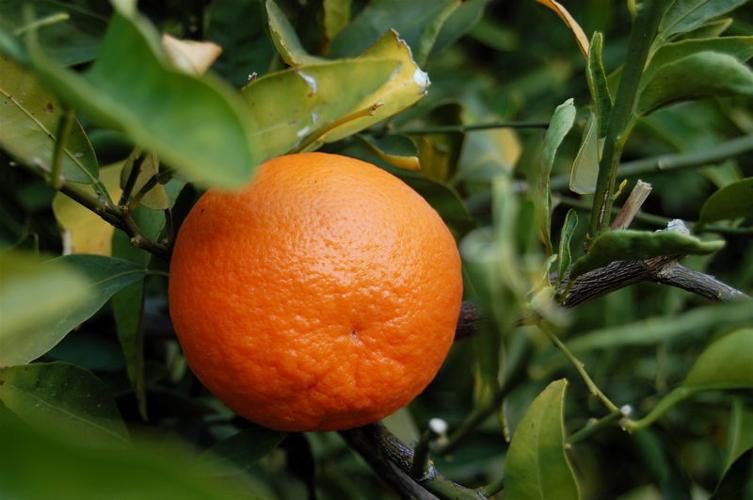Q: How long can tangelos be left on the tree and still be good? After picking, how long should the tangelos last? Should tangelos be stored on the counter or in the refrigerator?
A: The recommendation is to pick citrus when it is ripe, since they don’t ripen any more once off the tree. Since we all have different tastes, it is best for you to pick one or two and try them. If they taste as good as you hoped, then pick them all. You can also experiment to see how the taste changes over time and just pick enough to eat each week. If you have a lot, storing them in the refrigerator is recommended since they will spoil more quickly if left at room temperature.
Tangelos and tangerines have some of the shorter harvest times of all the citrus fruit, and each variety is ripe for about two months. Depending on which variety you are growing, harvest is recommended between mid-November and mid-February.
Q: I’m in SaddleBrooke and have a few Thompson Yuccas. The recent winds caused one yucca to break off half way up, in the middle of its trunk. The breaking point looks to have had an injury at that point in its past. These plants are on the expensive end and are listed as disease- and pest-free, so I’m surprised to find myself with these issues.
A: Thompson yuccas (Yucca thompsoniana) are very tough plants and they do not have any known pests. They are tolerant of extreme heat and cold hardy to minus 10 degrees. The photo you sent shows what appears to be a rotten core and that made it susceptible to the winds that snapped it off. It’s likely that the past injury you noted was the beginning of the problem and may have allowed for disease to enter and progress.
I also noticed the leaves, which are typically darker green; seem to be suffering from lack of moisture and possibly salt damage. While these plants are drought tolerant, providing irrigation every two weeks in the summer and every three weeks in the spring and fall to a depth of 12 to 18 inches is recommended and makes them look better. Regular irrigation will also help wash the salt through the root zone.
Q: My red grapefruits this year have thick rinds. Is there a way to avoid this in next year’s crop?
A: Thick rinds on citrus may indicate too much nitrogen and a lack of potassium or potash in your fertilizer. Make sure you are using a complete fertilizer that contains some of each of nitrogen, phosphorus and potassium. Since it is the time of year to put down your first fertilizer dose, you can hopefully get this problem fixed before your next crop.
Q: Should I be worried that my landscaper severely trimmed the bottoms of these two old agaves? He said the reason was to keep snakes from hiding there and make it easier for them to clean around. He removed one without notifying me, saying it was too close to the other and was “dying.” I see some evidence of west-side gray leaves; does this mean my agaves are dying or is it sun damage?
A: It is troubling that your landscaper pruned these plants and so severely. Typically, agaves don’t need pruning unless they have diseased or damaged leaves. Some people prune off the pointy leaf ends if they extend into walkways but even this is damaging to the plant. If snakes are a regular problem in your area, maybe there is a good reason for protecting the landscapers.
It’s not clear what sort of cleanup is required from the photos or what you asked him to do in that regard. Removing one because it was too close makes sense although it probably should have been discussed before removing it.
Finally, agaves don’t do great in direct western sun so you might be seeing sunburn on the leaves facing that direction.






